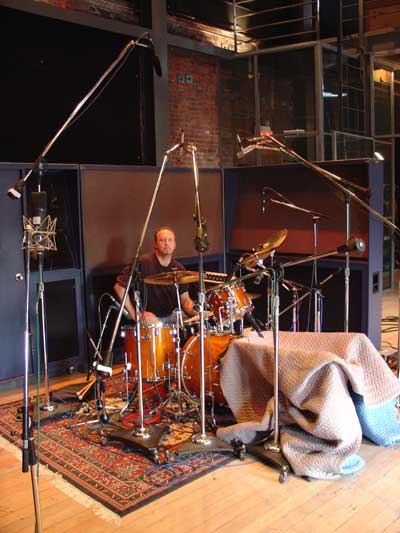Studio Drummer – Studio Level Specifics
*PLAYING SIDE STICK AT THE STUDIO LEVEL IS ALSO CHALLENGING.*
Again, the consistency of the sound that you’re creating is the issue. There are several tricks that help in this.
What you don’t want is for the stick to be even slightly changing position.
The stick is turned around so that the butt end is being used to strike the rim. The slightest little movement will create a distinctly different tone and you don’t want that.
The first technique I use is to anchor the palm of my hand on the head itself. By anchoring the palm it greatly decreases the amount of movement in my position. The only disadvantage I find is that it can be harder to get enough impact. When that is the issue I use this technique.
Some side stick tracks require more aggression than others. Working with the producer and engineer I strike the rim and move the stick to different positions and ask them their preference in tonality.
Once the optimum position is located I take a pen (pencil if you prefer except pencil obviously wears off quickly) and I draw a circle right around the stick at the exact point of impact with the rim. That way I can see the position and quickly adjust it if I need to.
The third trick which I don’t use but I have seen other prominent drummers use is to trace the stick position onto the snare head like you would with tracing paper. That way the exact stick position can also be seen clearly.
*PLAYING EFFECTIVE HI HAT…*
is one of the most un-talked about art forms surrounding the drum kit. I like to make the comparison of someone thrashing out sloppy 8th notes on the hats all the way up to the mastery of someone like Stuart Copeland, one of the all time great hi hat artists in pop music!
The subtleties and level of emotion and sheer expression that he achieves out of just a hi hat is truly where the bar has risen to this day!
So the point is this.
The hi hat is a ‘musical instrument’ so treat it like one, approach it like one






